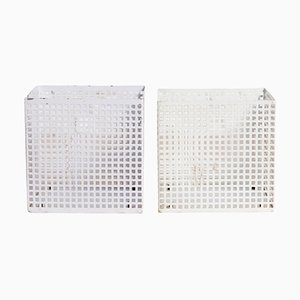
Architect-designer Josef Hoffmann was born in 1870 in Prinitz, Moravia (now Brtnice, the Czech Republic). He studied architecture at the Senior State Commercial and Technical School in Brünn (now Brno, Czech Republic). After a year of practice in Würzburg, Germany, he moved to Vienna, the city where he would remain for the rest of his life. He enrolled in the Academy of Fine Arts there, and, between 1892 and 1895, studied under both Karl von Hasenauer and Otto Wagner. From 1896 to 1897, he worked in Wagner’s Vienna studio. He also became one of the founding members of the Vienna Secession, a group of artists (including Gustav Klimt, Carl Moll, and others) who favored a modern, experimental approach to the arts. Hoffman’s contributions to several Secession exhibition installations, all influenced by the Art Nouveau-Jugendstil style, helped establish his name. In 1899, he was appointed a professor at Vienna’s Kunstgewerbeschule, a position he held until his retirement in 1936. He taught in the school’s architecture, metalwork, enamel, and applied art departments.
Around 1900, Hoffmann became a proponent of the Gesamtkunstwerk (or total work of art) approach, exemplified through unified architecture and interior design, with an emphasis on craftsmanship. He was cofounder and co-artistic director, alongside Koloman Moser, for the new Wiener Werkstätte (Vienna Workshops) beginning in 1903. In 1905, he left the Secession, and received the commission to design the Palais Stoclet in Brussels. Completed in 1911, the Stoclet was arguably Hoffmann’s most important architectural project.
Throughout his prolific 50-year career, Hoffmann designed everything from textiles to furniture, fashion, jewelry, exhibitions, and buildings for prestigious clients like Lobmeyr and Lötz. Later in his life, he focused primarily on housing projects. Aesthetically, his work evolved from Jugendstil to more minimal, geometric forms and then on toward neoclassicism.
He died in Vienna in 1956.

